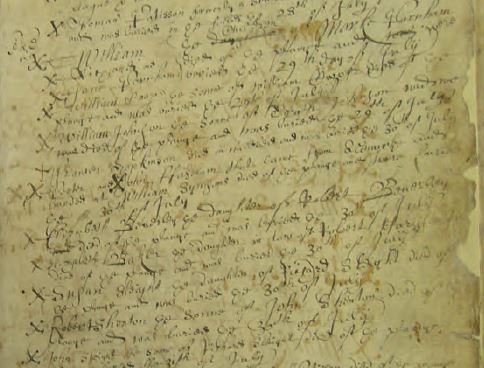The Impact of Plague on the Population

Burial records from the village of East Stoke in 1646: those who died from the plague are marked with a ‘X’.
During the Great Plague of 1665, the death rate was thirty percent higher than normal and in areas affected by the disease, around twenty to thirty percent of people died. By contrast, when the area of the Thames Valley suffered plague and other epidemic diseases during the Civil Wars, burials in Berkshire were 72 per cent higher than in the previous twenty years. When plague struck the royalist garrison of Newark in 1646, 159 of the 161 deaths recorded in the nearby village of East Stoke for that year were from the plague. In just one episode during the Civil Wars, 20-30,000 people died of the plague in Scotland when troops returning from the siege of Newcastle brought the plague with them.
However, plague spread unevenly across the country at different times. Although cities such as Bristol and Newcastle experienced severe outbreaks of the plague in both the Civil Wars and 1665, cities such as London and Norwich which suffered large numbers of plague deaths in 1665 remained relatively plague-free during the Civil Wars. People who lived in the poorest parts of cities, which were cramped and dirty, were more likely to die than the wealthy, who fled to the countryside in times of plague.
The plague also had an uneven impact on different ages. The proportion of people aged five to nineteen who died in the Derbyshire village of Eyam in 1665-6 was three times higher than normal. Similarly, the proportion of young people who died in the Devon town of Colyton during the Civil War outbreak of plague in 1645-6 was also substantially higher.
